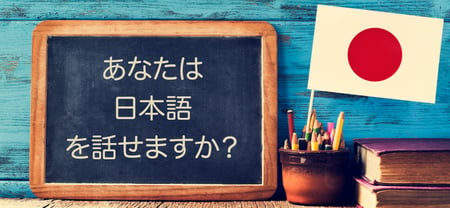

A Guide to Doing Business in Japan
Caitlin Nicholson
Japan is an island nation located in East Asia with a population of 127 million, eleventh largest in the world. Japan boasts the world’s third largest economy behind the United States and China. They are also the fourth-largest buyer of American products. These factors make Japan an attractive market for companies looking for a new audience for goods and services. Whether you’re looking to partner with an existing business in Japan or simply looking to reach Japanese customers using a website here are few important considerations for targeting a Japanese Audience.
Languages Japanese society is very homogenous – both linguistically and culturally. Nearly 98 percent of the population is ethnic Japanese and speak Japanese as their first language. The Tokyo dialect is considered Standard Japanese. For most businesses looking to attract Japan-based customers the first language for translating content should be Japanese. Japanese has no genetic relationship with Chinese, though it incorporates Chinese characters (kanji) in its writing system along with hiragana, katakana, and Latin script for loanwords. Japanese has different levels of politeness and formality depending on who you are speaking to. Informal or casual speech is only used for family and close friends, while formal or polite speech is used everywhere else, especially in business. Japanese language has many honorifics. These are parts of speech that show respect, show social distance, or rank. Honorifics are also very important in a business setting. If you are looking to do business in Japan or with Japanese companies, it is recommended to provide training in the use of honorifics. Currency Yen is the official currency of Japan. It is the third most traded currency in the exchange market after the United States dollar and the Euro. If you are looking to fully localize your website’s global eCommerce experience, then you will need to convert currency to Japanese Yen. Currency will need to be converted properly. There are no decimal places, so ¥500 is correct, while ¥500.00 is incorrect. Credit cards are the most popular method of payment for eCommerce, but Japan is also a cash-based society. Many Japanese consumers prefer to pay in cash. As a result, a lot of eCommerce companies such as Amazon use convenience store cash payments and deliveries. Where are Consumers Spending their Money? In 2012, Prime Minister Shinzo Abe took office in Japan, following the devastating 2011 Tōhoku earthquake and tsunami and subsequent Fukushima Daiichi Nuclear Power Plant meltdown. His goal has been to stimulate a stagnant Japanese economy through policies known as ABENOMICS. Japanese millennials are very similar to those in the United States – thrifty and reluctant to overspend. Japan Today called them “internet savvy bargain hunters.” Therefore, they are not as into purchasing luxury brands. It is important to adjust your prices accordingly to appeal to these frugal customers. Also, Japanese millennials are very tech savvy meaning that you should have a localized, mobile online presence. Overall, Japan is a highly connected population, with 94 percent of their total population online. They rank sixth in the world in terms of Internet users. Therefore, a website that embraces Japanese language and culture (color choices, image choices, etc.) will appeal to Japanese consumers. Such initiatives will allow you to effectively reach 118 million Internet users. Japan is the second largest online advertising market in the world, according to research from Santander. Using mediums such as SMS advertising and email marketing can prove very effective, as opposed to radio advertisements or more costly mediums such as television. When advertising to Japanese consumers, make sure that you provide content to them in Japanese so they best understand your message. Also, follow guidelines and regulations set forth by the Japan Advertising Council and the Japan Advertising Agencies Association. According to the Statistics Bureau of Japan, Japanese society is aging very rapidly. Therefore, industries that present strong business opportunities include medical device and equipment, pharmaceutical, healthcare, robotics, safety, education, and travel and leisure. Business Culture Japanese business culture is more formal than in the United States. For business meetings, dress conservatively. During meetings, never point or use excessive hand gestures. Also – silence is okay in a business meeting. Do not feel uncomfortable if there are extended periods of silence. Japan is a collectivist culture – not individualist as in the West. Strength lies in the group, not the individual. As mentioned in the language section above, Japanese has levels of formality. Knowing this is very important for business transactions. Seniority is usually determined by age. When greeting a group in a meeting, greet the most senior person first and then work your way down. Business cards are very important in Japanese business culture. When doing business with a Japanese company, have your business card translated to Japanese on one side and the source language on the other. The custom of presenting business cards is known as meishi koukan (名刺交換). The exchange of business cards signals the beginning of a business relationship. A business card is an extension of identity. You should accept the business card with both hands, read it, and place it in your business card holder. You should present your business card with two hands and the Japanese side facing up. If you’re looking to do more business in Japan, the first step is to present your content in their language with respect to their values and needs. For more help in connecting with the Japanese market, get in touch with LinguaLinx.
Related Resources





